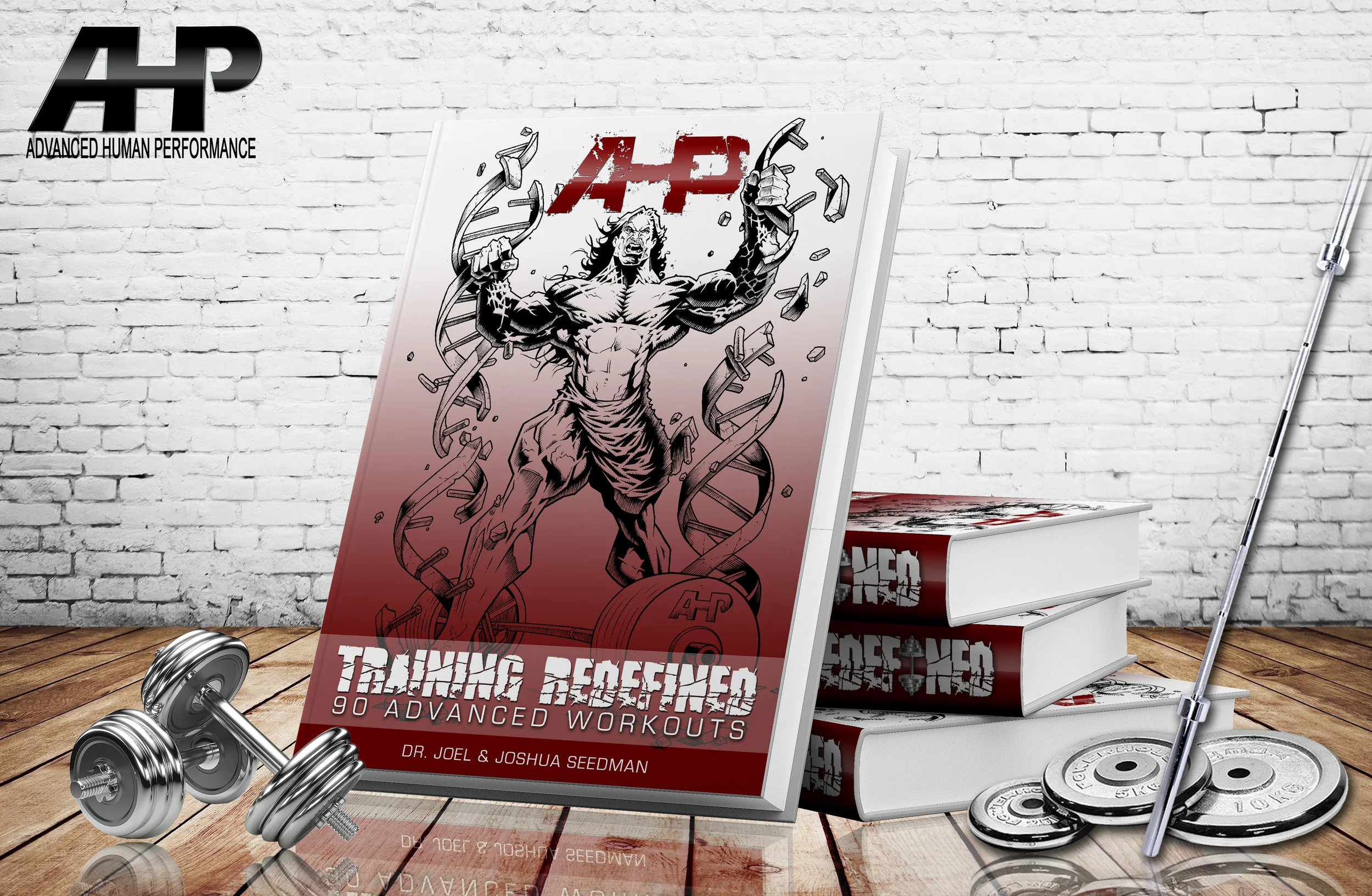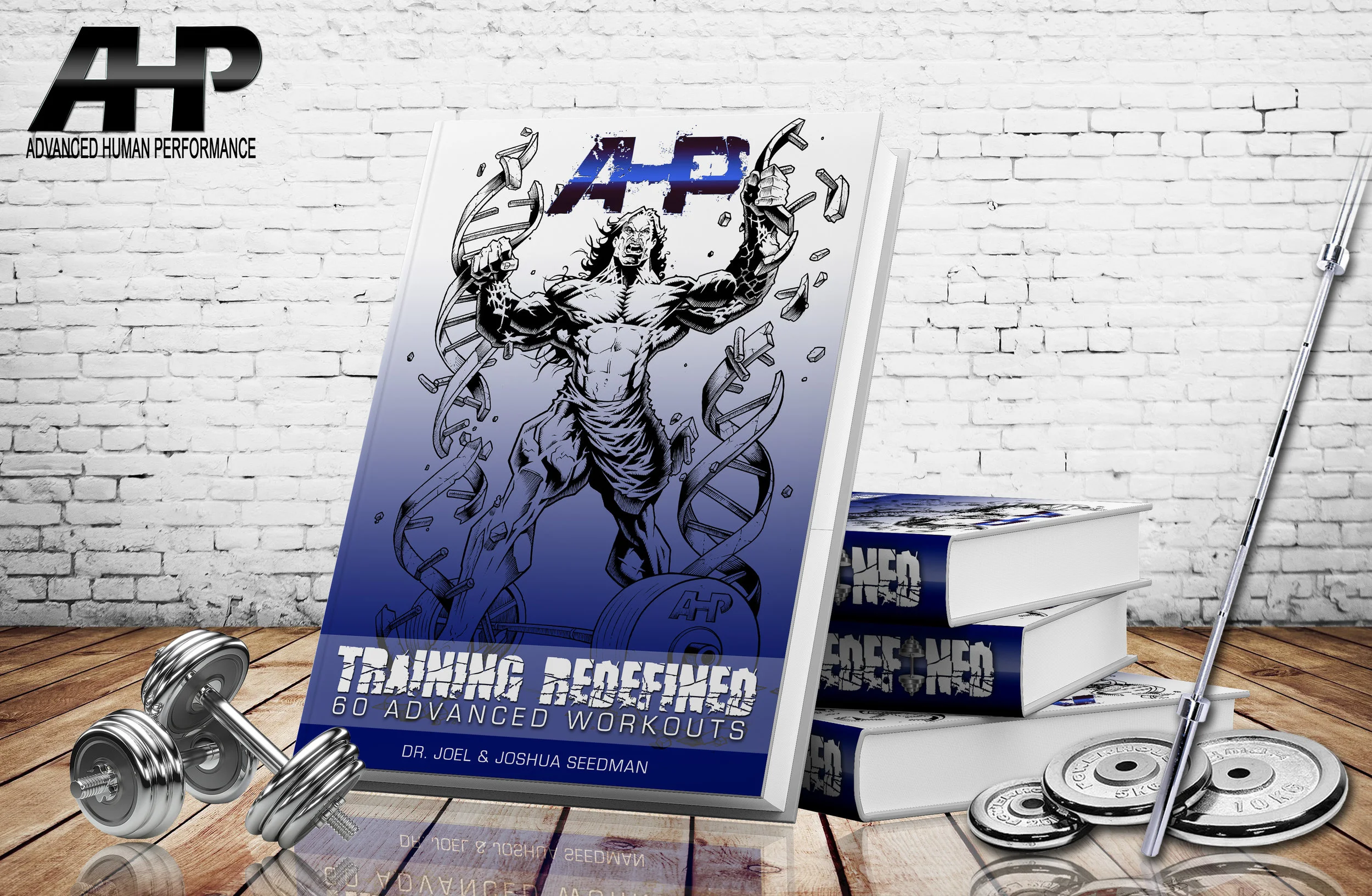Improve Your Bench Press, Shoulder Health, & Posture With The Head-Off Technique
Dr. Joel Seedman, Ph.D.
Over the years the head-off chest press has become one of my favorite chest pressing protocols for improving horizontal pressing mechanics. Other coaches including world renowned strength coach Nick Tumminello have also discussed the benefits and values of the head-off technique. However, my approach is slightly unique in that the emphasis deals less with neck strengthening and more with shoulder health and pressing mechanics. To perform the head-off chest press, simply slide back towards the end of the bench so that the base of your neck is at the edge of the bench with your head completely unsupported. This can be incorporated on any chest press variation.
This unique positioning may look unusual however the benefits it provides to your bench press mechanics, shoulder health, posture, and chest growth are significant. Here’s why:
The head-off chest press promotes heightened spinal rigidity and optimal levels of t-spine extension as the head is not fighting against the bench or floor as is typically the case when the base of the skull is pressed into another surface. As a result, optimal spinal alignment can be achieved without the neck being forced into slight cervical and thoracic flexion as is typically produced from traditional chest presses (the bench pushes the head slightly forward which can also lead to neck pain).
The benefits this has on posture, spinal positioning, and shoulder mechanics is incredible as it’s much easier to retract, depress and medially rotate the scapula when the head and neck are unrestricted. The key is to maintain a neutral cervical position while producing extension through the t-spine. Oddly enough, many of my athletes end up preferring head-off presses once they become accustomed to the unique stimulus as traditional variations (with the head on the bench) tend to feel very constricting and unnatural compared to the head off variations. In addition I've seen this do wonders for shoulder injuries and upper body movement mechanics due to improved shoulder centration and packing of the glenohumeral joint. These improved mechanics typically lead to increases in upper body pressing power, strength, stability, and force production.
As an added bonus it's one of the best neck strengthening and neck corrective exercises there is which happens to be a very underrated and oftentimes overlooked component of fitness. For individuals who sit at a desk and spend excessive time in cervical flexion this is of huge value. In addition, it does wonders for curing neck pain and cervical dysfunction.
Is This Excessive Extension??
No, this is not excessive extension as many coaches would falsely assume. This represents optimal postural positioning not only for horizontal pressing exercises but for most movements in general.
Cervical flexion or forward head tilt is one of the biggest issues I see not only in individuals who sit at desks all day but also in many so called expert trainers and coaches. Unfortunately what many trainers and coaches consider to be ideal postural alignment does not involve ample t-spine extension. In fact over the last 5-7 years the fitness industry has perpetuated the idea of using an overly flexed spinal position (as a means of avoiding lumbar extension). This is typically accompanied with excessive posterior pelvic tilt and extreme rib cage tuck.
As a result, this has led to shoulder rounding, spinal compression (instead of spinal elongation), loss of natural spinal curvature, forward head tilt and cervical compression. In fact the whole notion of packing the head has been taken too far and falls into the category of trying to over-correct cervical hyperextension. The goal should be cervical elongation with natural extension (not hyperextension or tilting back). An overly packed head leads to cervical compression, tight pectorals, shoulder rounding, tight glutes, low back pain, impaired breathing patterns and poor hip hinge mechanics.
And yes, cervical elongation is critical for upper body mechanics as it allows the shoulders and scapula as well as the rest of the spine to set into its natural and proper position for pushing and pulling mechanics. Not only will this improve posture and body positioning but your strength, shoulder mobility, and shoulder stability will markedly improve on all upper body exercises.
Proper posture on upper body movements involves significant t-spine extension and a tall head position (not compressed head). To avoid excessive low back extension the lifter needs to focus on creating the extension through their upper torso by firing the lats and keeping the core braced. This eliminates excessive lumbar curvature, which is a common compensation pattern for weak lats and the inability to create optimal thoracic extension.
Variations
As previously mentioned, the head-off protocol can be applied to a number of chest presses. Here are a few of my favorites.
Bottoms-Up Variations
Bottoms-up chest presses are very conducive for incorporating into head-off variations. Here I'm working with collegiate football superstar and NFL athlete Blake Sims helping him improve his shoulder health and upper body mechanics after suffering an injury early in the season.
The combination of bottoms up training with eccentric isometrics and head-off bench press technique does wonders for the shoulder joint by optimizing scapulohumeral rhythm. The bottoms-up technique forces the lifter to centrate the glenohumeral joint by stabilizing the shoulder as the load is highly unstable. This requires the lifter to retract, depress, and medially rotate the scapula towards the spine in order to control the load and dial in the movement. Combining this with the head-off technique helps to further reinforce t-spine extension, scapular retraction, and shoulder depression.
Barbell Bench Press
The barbell bench press variation can be effectively employed with the head-off protocol by simply sliding a bench 4-6 inches in front of a squat cage or power rack. The impact this has on improving bench press strength and technique is phenomenal.
Incline Barbell
Performing incline head off chest press variations is one of the most effective methods for improving hip and leg drive on horizontal presses. If you’re not driving with your legs and activating your glutes then you’ll simply slide down the bench thereby providing immediate feedback about lower body recruitment. This can be applied to barbells and dumbbells.
Dumbbell Variations
Dumbbell Variations are very conducive for employing the head-off chest press protocol. Simply slide your hips back 4-6 inches from where you would typically lay on a bench so that the head is unsupported. Here’s another one of my NFL athletes and wide receiver Larry Pinkard demonstrating the incline dumbbell press as we used this frequently to work around a shoulder injury he suffered during the season.
Other Variations
The head off chest press protocol can also be combined with the leg raise protocol. Besides reinforcing head, neck, and shoulder, position, the lifter will experience increased instability due to reduced contact with the bench. This requires greater motor control and very strict mechanics as demonstrated by one of my awesome clients Elizabeth Yates. Closing the eyes helps to further ingrain proper positioning as it forces the athlete to rely more on proprioceptive feedback from muscle spindles in order to hone in their mechanics.
The head off protocol can also be applied to any other supine exercise that involves lying on a bench including, pullovers, skull crushers, and chest flyes to name a few. If you're unaccustomed to this technique I recommend starting with lower rep ranges as the neck will have a tendency to quickly fatigue until you've adapted to the stimulus and corrected your mechanics.
Accomodating Resistance Variations
The head off protocol can also be combined with variations that employ accommodating resistance including the use of band resistance, band assistance, and chains. Here's one of my bodybuilding clients Ben Lai demonstrating the incline dumbbell chest press with band resistance while also employing the head off protocol.






























